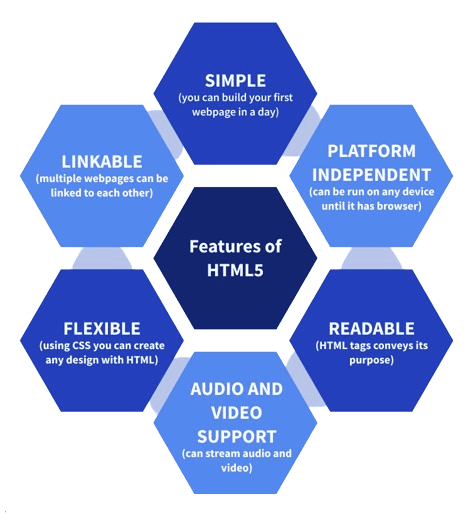Following Key Topics to Cover in Web Development with
HTML5-
1) Introduction to HTML5
- What is HTML5?
- New Features and Improvements
- HTML5 Syntax and Structure
- HTML5 Elements and Attributes
- HTML5 Semantic Elements
2) HTML5 Semantic Elements
- Header, Footer, Nav, Main
- Article, Section, Aside
- Details, Summary
- Figure, Figcaption
3) HTML5 Forms and Input Types
- New Input Types: email, url, tel, date, etc.
- Form Validation
- Placeholder Attribute
- Datalist Element
4) HTML5 Audio and Video
- Audio and Video Tags
- Supported File Formats
- Attributes and Controls
- Media Events
5) HTML5 Canvas
- Introduction to Canvas
- Drawing Shapes and Paths
- Using Text and Images
- Canvas Animation
6) HTML5 Geolocation
- Geolocation API
- Getting User's Location
- Handling Errors
- Using Geolocation Data
7) HTML5 Web Storage
- Session Storage vs Local Storage
- Storing and Retrieving Data
- Limitations and Security
- Best Practices
8) HTML5 Drag and Drop
- Drag Events
- Draggable Attribute
- Drop Zone
- Using Data Transfer Objects
9) HTML5 Web Workers
- Introduction to Web Workers
- Creating and Using Web Workers
- Communication with Main Thread
- Web Worker Lifecycle
10) HTML5 Responsive Design
- Media Queries
- Fluid Grid Layouts
- Flexible Images and Videos
- Viewport Meta Tag
11) HTML5 Accessibility
- Accessible Forms and Inputs
- Semantic HTML5 Markup
- ARIA Attributes
- Testing for Accessibility
12) HTML5 Best Practices
- Clean and Maintainable Code
- Optimizing Performance
- SEO-Friendly HTML5
- Cross-Browser Compatibility
Mastering Web Development with HTML5 is essential for
anyone aspiring to become a web developer. This
curriculum covers the fundamental topics needed to
create modern, responsive, and accessible websites. By
understanding these concepts, you can build
user-friendly and visually appealing web applications.
Best of luck with your learning journey!


